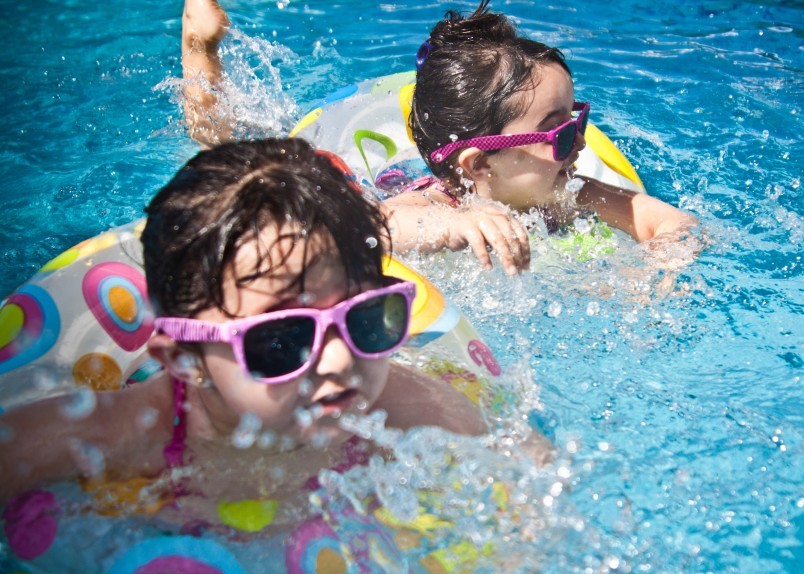
Happy September!
The summer at work has been filled mostly with healthy babies and children coming in for their well child visits. There are newborns and 6 month olds and oh-so-many 5 year olds eagerly getting ready for kindergarten. There are camp physicals and sports physicals and pre-college physicals, too. Scattered here and there are fevers from summer viruses, a few colds, and of course, rashes. Summer is tough on a young person’s skin, between trips to the beach, swim lessons, hiking, and endless hours playing outside. Unfortunately, as we all know, the sun’s damaging rays can have life-long effects.
Every year in the United States more than 1 million people are diagnosed with skin cancer. Of those million, 68,000 are diagnosed with melanoma, and nearly 9,000 die from the disease.
So how can you best protect your little one’s precious skin, not only during the summer, but all year round? There are so many sunscreen options out there, but which is the best and the safest?
General Rules for Sun Safety for Everyone
- Minimize exposure to the sun between 10am and 4pm
- Apply sunscreen every 2 hours at a minimum
- Wear a hat and sunglasses.
- Cover up as much as possible. Rash guards and clothes with UPF 50+ ratings are a great way to cover up. See my Sunscreen and SPF Clothing page for good companies with cute protective clothing.
Sunscreen and Children
Classically, it has been recommended that babies under 6 months of age avoid all sun exposure. However, this may not always be possible. Recently the AAP suggested that babies over 4 months can safely use sunscreen on exposed surfaces that can’t easily be covered, such as hands, necks, and even faces. Hats and sunglasses are essential, of course, if they are tolerated. A sunscreen that has broad spectrum protection and with SPF 30 is sufficient, as it blocks out about 97% of UVB rays. Broad spectrum protection means that it protects against both UVB rays that cause sunburn, as well as UVA rays that cause invisible damage to the skin and promote aging.
Safety of Sunscreens
Perhaps the most important factor when deciding on a sunscreen is the ingredients. There are two types of sunscreens: chemical sunscreens, and barrier (mineral) sunscreens. Recently there has been a ton of press regarding safety of all types of sunscreens.
I recommend barrier sunscreens, which include the active ingredients zinc oxide and/or titanium dioxide. These sunscreens literally provide a physical barrier over the skin to block out the UV rays, with little to no systemic absorption through the skin. Zinc oxide provides broad spectrum protection against all UVA and UVB rays, while titanium oxide also protects against both, but does not cover the entire UVA spectrum. The cons of these sunscreens is that they are typically very hard to spread and leave white residue. While this is indeed a nuisance and my kids really dislike the process and the feel of these sunscreens, I feel the safety outweighs the annoyance and I always know when they have their sunscreen on by the faint white residue on their faces!
The chemical sunscreens use synthetic chemicals to block out the sun’s rays. Unfortunately they can be absorbed into the body, especially in babies, who have more sensitive skin. Many of these chemicals have known estrogen-like effects, or are known to create DNA damaging free-radicals, and the FDA is studying them all. In addition, it has been shown that Oxybenzone and Octinoxate are culprits in the destruction of coral reefs around the world.
Here is a list of some of the active ingredients to avoid in your child’s sunscreen:
- Dioxybenzone
- Oxybenzone
- Octinoxate
- PABA
- Ethylhexyl p-methoxycinnamate
- Octocrylene
- Ethylhexyl salicylate
- Octyl salicylate
- Homosalate
- Menthyl Anthranilate
- Avobenzone
Here is the list of active ingredients you want in your sunscreen:
- Zinc oxide
- Titanium dioxide
Please remember, though, that ANY sunscreen is better than no sunscreen, so exposure to the chemical sunscreens when they are the only ones available is completely fine and reasonable and I would rather see my patient’s covered than not.
I’ve posted some great sunscreen products on my Sunscreen and SPF Clothing page.
Have fun in the sun and stay safe!